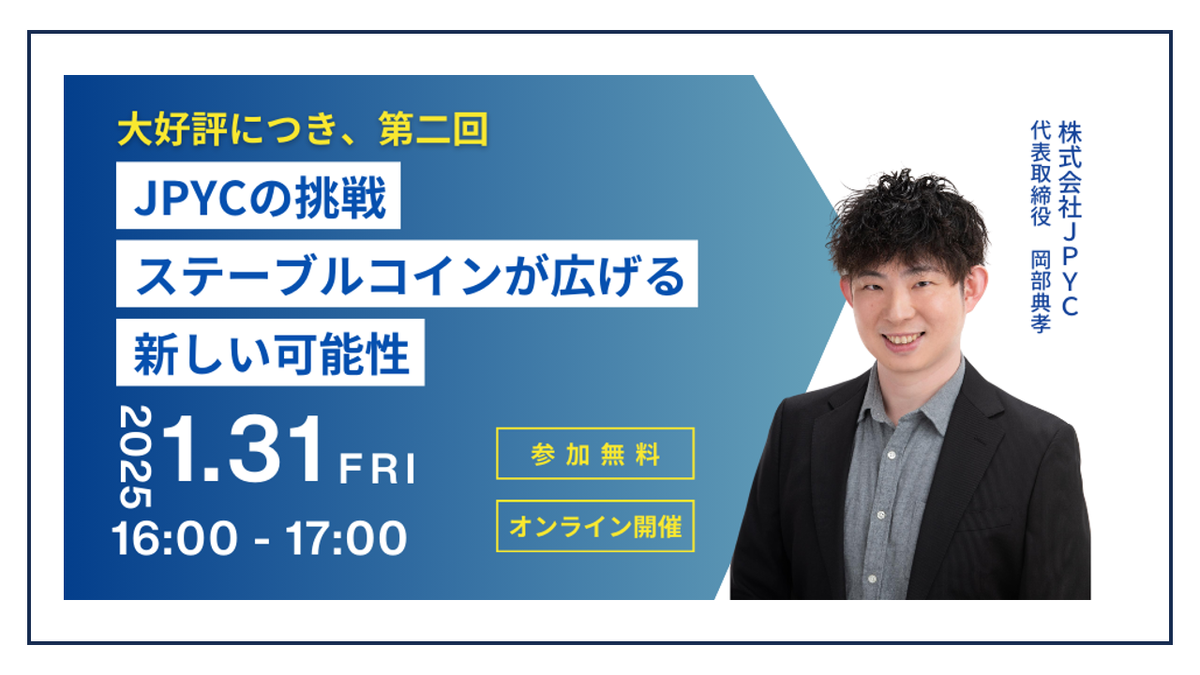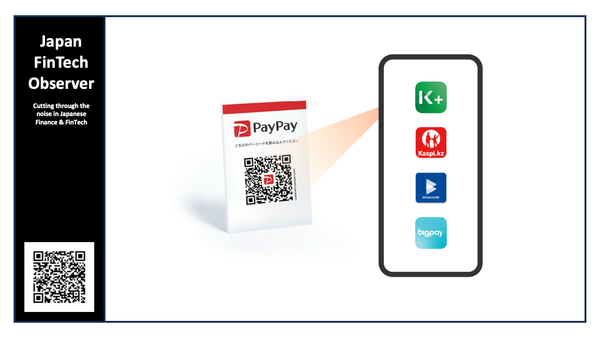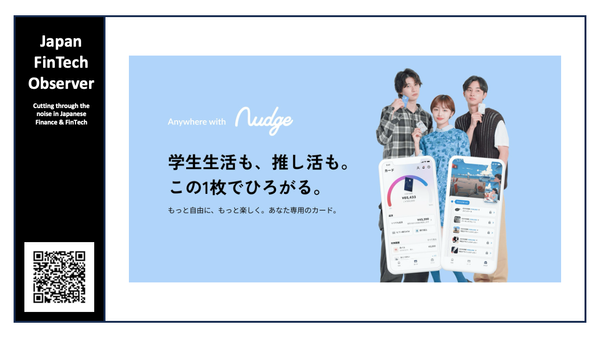JPYC’s challenge - Stablecoins open up new possibilities

JPYC held a seminar about its Japanese stablecoin, and its potential applications, on Friday, January 31, 2025.
CEO Okabe's Self-Introduction and Company Overview
Okabe begins by thanking the attendees and introducing himself as the CEO of JPYC, a company he founded five years prior. He explains his background in entrepreneurship, having started his first company working on digital currency. His second venture involved blockchain gaming, and JPYC is his third company. All of his ventures have been related to digital currencies.
Okabe highlights JPYC's mission to “break through societal gridlock,” which he explains as fostering innovation and creating a society where everyone can innovate. He believes this requires increasing the fluidity of capital and building systems that facilitate its flow. He aims to create a currency that can be used freely by anyone in any situation, which he feels is essential for true innovation.
Okabe provides an overview of JPYC:
- Establishment: Founded five years ago.
- Size: Approximately 25 employees.
- IPO Status: Preparing for an IPO, having been a member of the Kanto Financial Bureau's FinTech Consultation Desk for three years and securing Type III Financial Instruments Business Operator registration.
- Investors: Includes venture capitalists, individuals, and listed companies. Notably, Circle, the issuer of USDC (a US dollar-backed stablecoin), is an investor and has made JPYC the first startup it invested in globally.
- Core Business: Creating a Japanese yen stablecoin, analogous to USDC.
Okabe explains the growing significance of stablecoins, referencing US President Trump's emphasis on using stablecoins globally to maintain the US dollar's dominance. Circle, and by extension JPYC due to their investment, has gained attention as a key player in this potential global stablecoin rollout. While Japan has not officially announced similar plans, Okabe mentions that stablecoins and Web3 are part of the national strategy.
Okabe introduces the JPYC team, highlighting their diverse backgrounds, including experience in finance, blockchain, and digital currency, making them well-versed in the stablecoin landscape.
JPYC's History and Partnerships
Okabe then outlines JPYC's journey:
- 2019: Company founded.
- 2020: Conducted demonstration experiments as a registered business operator with the Kanto Local Finance Bureau.
- January 2021: Issued the first JPYC as a prepaid card and private currency.
- Subsequent Developments: Expanded JPYC's usage through Visa prepaid cards, demonstration experiments with regional banks, integration with Giftee Box (a multi-store gift card service), and increasing issuance.
- 2023: Obtained their first Fund Settlement Business license for third-party prepaid card issuance. Determined a lead underwriter for the IPO. Actively pursuing new licenses and expanding issuance in preparation for the IPO.
JPYC collaborates with various companies, including Mitsubishi UFJ Trust and Banking Corporation and Hokkoku Bank (banking sector), as well as payment system providers like Densan System and UNIDOS. They are also working with companies in other sectors and are open to further partnerships.
Deep Dive into Electronic Payment Methods and Stablecoins
Okabe explains the concept of “electronic payment methods,” a legal term defined in the revised Banking Act and Payment Services Act. He differentiates this from “stablecoin,” which he considers more of a marketing term implying price stability. He points out that some assets labeled as stablecoins may not truly be stable.
Okabe categorizes electronic payment methods:
- Type I: Issued mainly by money transfer operators, though banks may issue them in the future. They require KYC (Know Your Customer) checks but can circulate among an unspecified number of people. There are transaction fees and limits on exchanges with cash.
- Type III: Primarily issued by trust banks. They also have different backing structures. There is no 1 million yen limit, but they cannot be circulated among the general public. They are better suited for closed systems or international transactions.
- Foreign Electronic Payment Methods: Issued based on foreign laws, like USDC or EUROC. While not subject to Japanese regulations, licenses are required for transactions with Japanese yen or other Japanese electronic payment methods.
Okabe clarifies that JPYC currently focuses on Type I electronic payment methods.
JPYC’s Features and Advantages
Okaybe emphasizes JPYC's advantages:
- 1:1 Exchange with JPY: JPYC can be exchanged for Japanese yen at a 1:1 ratio.
- Accessibility: Usable by people, systems, and AI.
- Zero Fees: No transaction fees, registration fees, or fees for converting back to yen.
- No Registration: No registration or account required.
These features make JPYC a novel and potentially disruptive payment method, especially compared to credit card fees of around 3%.
JPYC's Use Cases and Future Directions
Okabe describes JPYC's use cases, comparing it to existing payment systems:
- Bank Transfers: High transfer fees and limited to account holders.
- Credit Cards and PayPay: Limited to merchants, difficult for B2B transactions.
- JPYC: Combines the benefits of bank deposits and digital cash, offering usability for an unspecified number of users and low transaction fees.
He draws parallels with the US stablecoin market, which has a market cap of approximately 34 trillion yen, suggesting that the Japanese yen stablecoin market has significant potential to grow, possibly from several trillion to tens of trillions of yen.
Okabe explains that JPYC intends to replicate the functionality of traditional payment systems with lower fees. He highlights its compatibility with existing programs (especially those designed for USDC) due to shared specifications. He acknowledges that further partnerships are needed for services like ATM withdrawals and exchanges with cryptocurrencies.
Specific Examples of JPYC Implementation
He then delves into specific examples of how JPYC is being used:
- Densan System: Developing a system for barcode payments at convenience stores using JPYC.
- DAO (Decentralized Autonomous Organization) Implementation: Using JPYC for fundraising, revenue payments, and automated distribution of funds to DAO members, ensuring transparency and efficient fund management. This is enabled by recent regulatory changes regarding DAOs.
- Gope-pay: Used by Kajima Construction for incentivizing construction workers, providing a solution for efficiently distributing incentives based on peer reviews.
- Upbond (a wallet company): Created a walking app that rewards users with JPYC.
- Good Box: Used for rewarding idea submissions.
- Tippay: A service allowing users to send JPYC to other X (formerly Twitter) accounts.
- Aoki App Wallet: Recently released, this wallet uses My Number cards (Japanese social security and tax number cards) to send cryptocurrency, including JPYC and USDC.
These examples showcase JPYC's versatility and the potential for its integration into various services. He notes that many of these implementations are developed by other companies, demonstrating the organic growth of the JPYC ecosystem.
Legal and Regulatory Landscape
Okabe emphasizes that businesses do not need a contract with JPYC to use it for payments, just as merchants do not need a contract with the Bank of Japan to accept yen. However, KYC is required for cashing out JPYC to prevent misuse. JPYC acts as an intermediary, holding the backing assets while allowing businesses to use JPYC freely for transactions. Their revenue model is based on the interest earned on these backing assets, which are held as government bonds or Japanese yen.
He then discusses the regulatory framework for stablecoins, mentioning that the Node version of the JPYC SDK (Software Development Kit) is currently publicly available. Other language SDKs for React and Python are planned for release in April, further facilitating integration with apps, servers, and AI.
Okabe briefly touches on the potential for connecting JPYC to the Zengin System (Japanese interbank payment system) and the implications of integrating with traditional banking infrastructure. He also discusses potential future regulations regarding stablecoins as assets.
Global Stablecoin Market and Future Outlook
Okabe revisits the growth of the stablecoin market, estimating that it could reach 420 trillion yen in three to four years, a 12-fold increase. He believes Japan could be a significant player in this market.
He concludes by discussing potential legal and regulatory changes in Japan, specifically related to the taxation of cryptocurrencies.
The seminar then transitions to a Q&A session.
Q&A Session Summary
Several key questions and answers are addressed.
- Role of intermediaries in stablecoin transactions: Okabe clarifies that intermediaries primarily facilitate the buying and selling of stablecoins, particularly for businesses like game companies that want to integrate stablecoin transactions within their apps without needing to become a cryptocurrency exchange. They also handle the exchange of stablecoins for fiat currency, requiring KYC checks.
- Why Type III electronic payment methods cannot circulate widely: Okabe explains that this limitation is due to the historical context of their development, initially focused on trust banks, and regulations are lagging behind. He anticipates future changes allowing broader circulation.
- How JPYC offers zero fees: JPYC's revenue comes from the interest earned on the backing assets held as government bonds and Japanese yen, rather than transaction fees.
- Zengin System connection in other countries: Okabe mentions that in many countries, including the US, systems are in place to connect stablecoins to their respective interbank systems with near-zero fees. Japan is lagging in this area due to the high fees associated with the Zengin system.
- Stablecoin regulation in the EU: Okabe notes that the EU has implemented MiCA, a comprehensive regulatory framework for crypto assets, including stablecoins. EUROC and USDC are compliant, but USDT has not yet complied and faces potential restrictions. He anticipates similar regulations in Japan.
- Gas fees for non-custodial wallets: Okabe clarifies that gas fees can be covered by the receiving party, JPYC itself, or the blockchain network, depending on the implementation, and are not always the sender's responsibility.
- How is creating a 1 JPYC currency possible: Okabe explains that this is possible due to the legal framework established in Japan for electronic payment methods. JPYC is legally recognized, similar to how bank deposits are recognized.
- Potential for future government regulation like Bitcoin: Such regulation is possible, especially in extreme scenarios like hyperinflation of the yen.
- Licensing requirements for using JPYC for payments: No license is required to accept or make payments in JPYC, similar to using Japanese yen. However, licenses are needed to exchange JPYC with other currencies or assets.
- JPYC’s competitive advantage: JPYC benefits from name recognition and a large market share in Japan. They are also focusing on the Type I electronic payment method, while competitors are exploring other models.
- Why USDT has higher circulation than USDC despite backing concerns: USDT has been around longer and is widely integrated into exchanges, while USDC is newer and adheres to stricter US regulations.
- Future plans for JPYC prepaid cards: Okabe mentions that they are exploring options for third-party issuance of prepaid cards, but there are some challenges regarding its overlap with other JPYC initiatives.
- Supported blockchains for JPYC: Currently, JPYC is available on Ethereum mainnet, Polygon, and Avalanche. They plan to expand to other EVM-compatible chains like Base, and potentially to non-EVM chains in the future.
- Launch date for the convenience store payment system: Okabe cannot provide a specific date as it depends on the development schedule of Densan System.
The Q&A session concluded with a discussion of JPYC's involvement in the FIN/SUM Fintech Summit, where they will be a bronze sponsor, and a mention of recent parliamentary discussions regarding cryptocurrency regulations. Okabe finished by stating that more legal regulations related to stablecoins can be expected by June 2025.
Please follow us to read more about Finance & FinTech in Japan, like hundreds of readers do every day. We invite you to also register for our short weekly digest, the “Japan FinTech Observer”, on LinkedIn, or directly here on the platform.
We also provide a daily short-form Japan FinTech Observer news podcast, available via its Podcast Page. Our global Finance & FinTech Podcast, “eXponential Finance” is available through its own LinkedIn newsletter, or via its Podcast Page.
Should you live in Tokyo, or just pass through, please also join our meetup. In any case, our YouTube channel and LinkedIn page are there for you as well.




